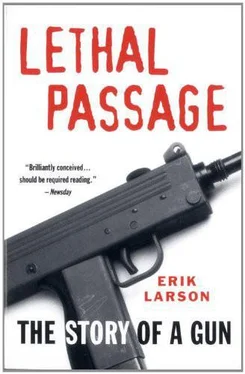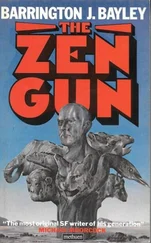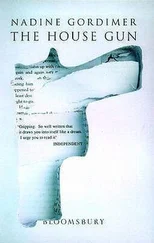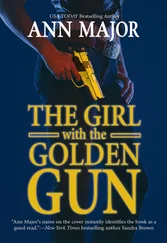The Gun Control Act greatly expanded the division’s law-enforcement responsibilities. “There’s no question the Gun Control Act of 1968 was like a breath of fresh air,” Davis said. “It gave us a very important law-enforcement jurisdiction, and one that was nationwide as opposed to the moonshine and illicit-liquor enforcement, which was primarily regional, the Southern tier of states.”
When Davis became director in 1970, his “hidden agenda” included separating the ATFD from the IRS. Indeed, the division’s new responsibilities had begun causing something of an image problem for the IRS. When agents participated in raids or became involved in shoot-outs, the headlines inevitably described them as IRS agents, at a time when the IRS was actively promoting the value of voluntary compliance with federal tax laws. On July 1, 1972, the Treasury Department removed the division from the IRS and made it the Bureau of Alcohol, Tobacco and Firearms. (The bureau would later take to calling itself ATF, dropping the B .) Although most of the agents were delighted, a few were fearful, Davis said. “I think some people had a little trepidation. Really, what we were doing was putting ourselves out in front, and there were probably some people who felt it was nice and safe and cozy being a little thing in a great big place like Internal Revenue.”
Inevitably, the new bureau found itself on a collision course with the National Rifle Association.
By 1972, the NRA was already a formidable foe, but it was wrestling with its own internal schism. In 1968 the NRA’s executive vice president, Gen. Franklin Orth, committed what the association’s hard-liners considered an unpardonable sin. By then, the post of executive vice president had become the most powerful position within the NRA, far more so than the presidency. Orth had dared support, in public, federal gun controls. Not just any controls, moreover, but the Gun Control Act of 1968. The ATFD’s agents may have welcomed the new law, but the NRA’s hard-liners loathed it. And yet Orth, in testimony before a congressional committee debating the proposed legislation, had said no “sane American who calls himself an American” could object to the bill’s elimination of mail-order sales.
Orth was one of the NRA’s old guard, who saw the NRA in more traditional terms as an organization devoted to promoting hunting and hunter safety, protecting hunters’ rights, and protecting the environment. A growing segment of the NRA’s membership, however, wanted the NRA to become a political force and in so doing to become the nation’s primary guardian of the Second Amendment. To these hard-line fundamentalists, led by Harlon Carter, a former head of the U.S. Border Patrol, any gun law was an infringement of the Constitution and was to be opposed without compromise. Gradually, the hard-liners gained influence and, in 1977, at the NRA’s annual meeting in Cincinnati, Ohio, won control of the board and elected Harlon Carter to be the new executive vice president. The coup, known within the NRA as the Cincinnati Revolt, set the NRA on the path it still follows today as a relentless opponent of gun control and anyone who supports it. Carter became a hero. “To the NRA faithful,” wrote Osha Gray Davidson in his 1993 book, Under Fire: The NRA & the Battle for Gun Control , “Harlon Carter is Moses, George Washington, and John Wayne rolled into one.”
The NRA chose to attack ATF as a means of diminishing the impact of the newly passed legislation. “That was a well-known strategy in Washington,” Davis said. “If you’re opposed to a law, the way to attack it is to attack the agency which has responsibility for it, and thereby reduce the enforcement of law.”
When Davis became director, he set out at first to try to smooth relations between his agency and the NRA. “I thought it made sense,” he said. “I guess probably what I started out doing was giving them too much credit. I thought that two sides to an issue through dialogue and good-faith efforts could make it a little easier on each other. But I found that not to be true.”
He told the NRA’s new executive vice president, Gen. Maxwell Rich, he would investigate any NRA complaints about his agency and give him a full report. “That didn’t work. Their primary interest as I saw it and as I found out was in criticizing and attacking the credibility of the bureau, rather than trying to reach some accommodation.”
Indeed, to Harlon Carter’s NRA the new bureau was the vilest of enemies. The bureau did little to smooth relations. In March of 1978, for example, ATF agents seized four machine guns and three other weapons from the NRA’s elaborate firearms museum on the first floor of its Washington headquarters, charging the weapons had not been registered in accordance with the National Firearms Act. “We didn’t feel that anybody was above the law,” Davis said. “We saw a clear violation.” The NRA countered that the guns no longer worked and were thus exempt from provisions of the act. A federal judge agreed and ordered the bureau to return the guns. There was more to this raid on NRA headquarters than dispassionate enforcement of federal law. Davis said, with a smile, “I suspect that we would have been a little bit gleeful if we had found something a little bit more severe.”
The NRA kept the pressure on Davis and the bureau. The association routinely attacked the bureau before Congress, depicting its agents as secret police who systematically trampled the rights of ordinary citizens. It cited example after example of what it alleged to be ATF abuses, including the case of Kenyon Ballew, a pressman with The Washington Post , who was shot in the head and paralyzed during an ATF raid on his apartment. The NRA and Gun Owners of America charged that the bureau’s men barged in without reasonable cause and shot an innocent gun owner.
In fact, Ballew possessed many firearms and chose to point one at the raiding party as they entered, prompting a Montgomery County police officer to fire. The bullet struck Ballew in the head. ATF agents seized three hand-grenade casings and a supply of black powder, which together constituted an illegal destructive device. Ballew sued, but lost. The federal court found that the ATF agents “had acted reasonably” and agreed the “three grenades together with the powder seized were in combination both designed and intended to be used as destructive devices.”
The NRA, however, took Ballew, by now in a wheelchair, to its annual meetings and wheeled him onstage as evidence of ATF’s infamous behavior.
Despite these attacks, the bureau felt reasonably safe. When Rex Davis became director, Richard Nixon was still president, and he favored some gun controls. So did Gerald Ford. And so too did Jimmy Carter. At one point, apparently with the blessings of the Carter White House, the Treasury Department invited Rex Davis to design new regulations that would help improve enforcement of the Gun Control Act—whatever regulatory powers Davis felt he would most like to have and that could be instituted without new legislation.
Davis, delighted at the invitation, published his bureau’s proposed new rules, which would have created unique serial numbers for every gun (as things stand now, guns from different manufacturers may have the same serial numbers) and established a central gun-tracing database that would include every step in the travels of every gun up to the last retailer in the chain. The database, however, would not include the names of the gun buyers themselves.
To the NRA, this was tantamount to establishing a national registration system. Outright confiscation of guns would surely follow. “The NRA went ape,” Davis said. The association sent out an emergency plea to its members to write letters of protest. “We got over three hundred thousand pieces of correspondence, of which seven thousand were in favor. We had mailbags in the corridors.”
Читать дальше








![Ричард Деминг - Whistle Past the Graveyard [= Give the Girl a Gun]](/books/412176/richard-deming-whistle-past-the-graveyard-give-t-thumb.webp)



